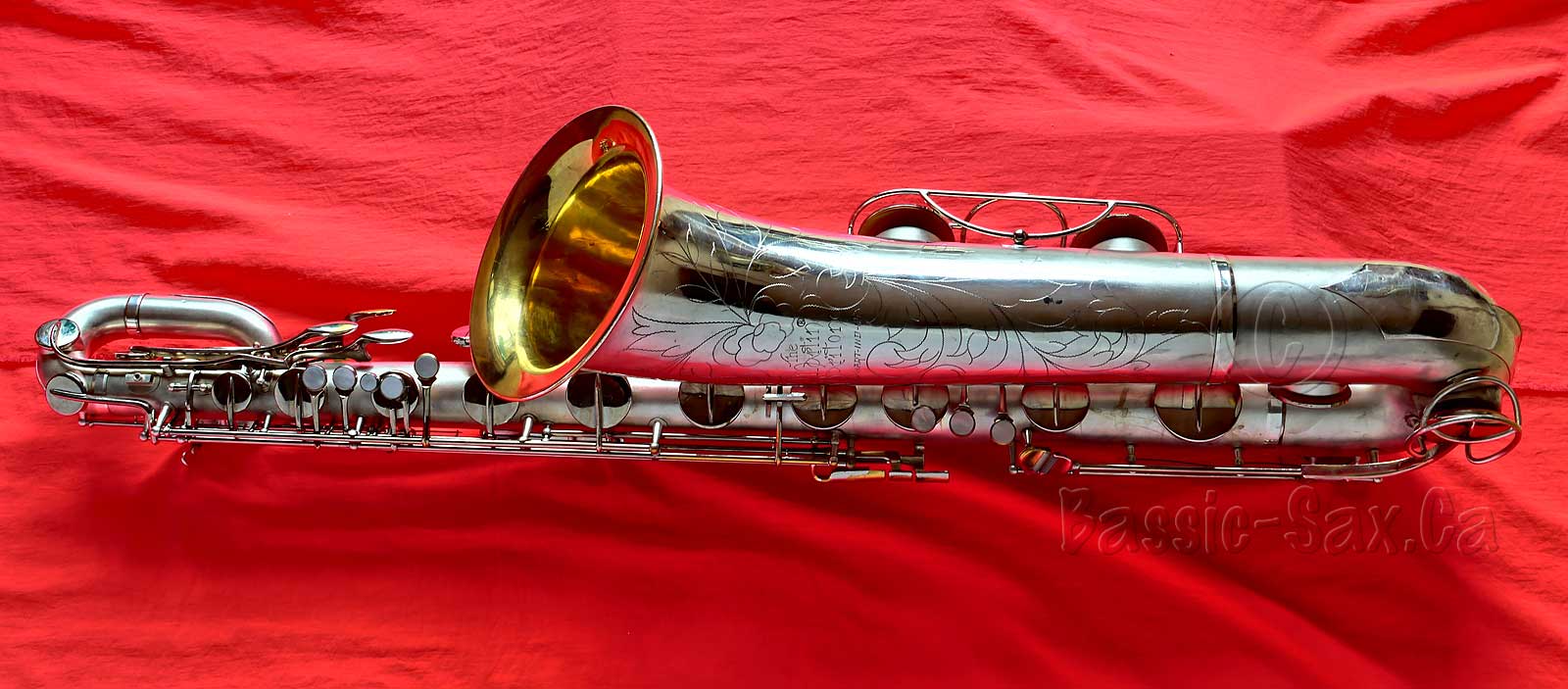
This Martin Committee III bari from 1958 came without a chromatic F# key. It also doesn’t have very ergonomically friendly keys compared to its Selmer Mark VI counterparts.
A couple of months ago a thread was started in the Woodwind Forum that got me thinking. The thread’s title, Are vintage instruments practical for everyday use?, was originally referring to clarinets, but I see the question applicable to saxophones as well. Therefore, in that vein, I’d like to explore this question in far greater detail here.
This is by no means a new topic. The practicality of vintage horns has been discussed ad nauseam in many a saxophone forum—SOTW comes to mind—as well as a multitude of websites and blogs, including mine, which is where this article was originally published.
That said, when I tried to find a concise list, or even a single article, that covers all the important points that I felt should be covered regarding decisions about vintage instrument ownership, I was unsuccessful.
So without further ado, here the my answer—the Bassic Sax answer— to the question:
Are vintage instruments practical for everyday use?
Simply put, they can be, but it depends on a whole lot of factors, including:
- Pitch
For example: If it’s a high pitch horn, like my Evette & Schaeffer baritone from 1886, it is not practical unless you’re playing with other high pitch instruments.
- Intonation
Some vintage saxes do not play in tune very well. They were just poorly made, or require very specific mouthpieces in order to play in tune. Remember though: all saxophones are inherently out of tune, it is the player that plays them in tune.
- Range
Not all vintage saxophones had the same range as modern ones. For example, many 1920s baris—certain Conn and Buescher models come to mind—were only keyed to high Eb, while eBay is flooded with early 20th century European horns that were keyed only to low B.

Oscar Adler alto saxophone keyed from low B to high F. Note it has no front F, or a chromatic F#. Source: saxofonservis.eu
- Key work
It’s common to see vintage saxophones lacking certain keys we take for granted, e.g.: front F, bis Bb, chromatic F#, and of course a high F# key. Conversely, many vintage horns had extra keys not found on today’s horns like a G# and/or high C/D trill keys, a fork Eb, etc. Either way, a player might find having or not having these keys could be a hindrance to their playing.
- Ergonomics
Unless you’re talking a Mark VI, most vintage saxes have ergos that are very awkward compared to modern ones. Can you work with these awkward key layouts?
- Condition
Many vintage horns have suffered from a lifetime of use, abuse, or neglect, while others are outright minty. While a talented repair tech, experienced in vintage horn repairs, can repair any vintage sax, if the horn is missing pieces, those are not so simple replace. In the case of keys or a neck, the parts are impossible to replace with original parts—unless an identical donor horn available. In all cases of repairs however, the questions that have to be asked are: How much are you willing/able to spend? Is the horn worth it?
- Player’s experience
Unless a player is at least an intermediate level player, they shouldn’t consider a vintage sax. Vintage horns have a lot of things going for them, but they also have a lot of things which make them more difficult to play. A new player starting out is always better out starting out with something like a YTS-23 or YAS-23, since these horns have much less resistance; have spot-on intonation; and maintain their regulation quite well.
I’ve pulled together a list of readings that might of be interest to you if you are looking for more information about the practicality of vintage horns.
If you have anything to contribute to this either the list above, or the suggested readings list below, please PM me through the WF, or send email me. Thanks!
Suggested related readings list
Saxophones: Vintage v Modern, by Stephen Howard
Vintage or Modern?, on the Bassic Sax website
Vintage Vs. Modern Saxes: An Interesting Theory, The Bassic Sax Blog
Exactly What Is A Vintage Saxophone? The Bassic Sax Blog
Vintage Or Modern: Choices, Choices, Choices, The Bassic Sax Blog
Yes But, What Does “Vintage Sax” Really Mean? The Bassic Sax Blog
